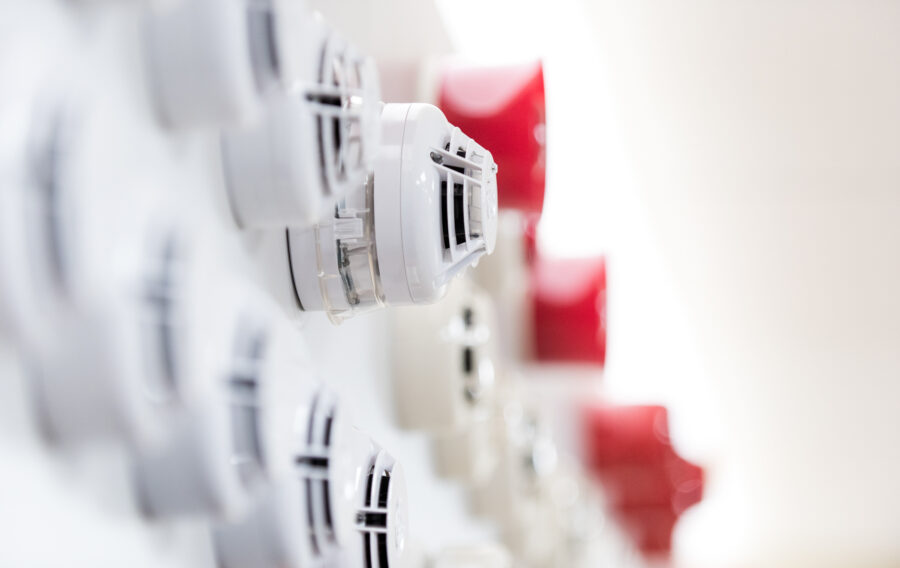Key Findings from the Interim Report
The charred remains of Grenfell Tower stand as a reminder of the importance of effective fire safety regulations, procedures and products. The extreme scale of this catastrophic blaze impacted the lives of hundreds of families, each looking for answers and better practices going forwards to ensure others are kept safe.
On the 14th of June 2017, fire broke out on the 24-storey residential tower block Grenfell Tower in North Kensington, London. The blaze caused 71 deaths and over 70 injuries, with occupants from 23 of the 129 flats found to have died in the fire. This unprecedented event was one of the worst recorded residential fires of modern times, burning for around 60 hours and requiring over 250 firefighters to extinguish the blaze. The rapid growth and acceleration of the fire thought to be caused by the building’s exterior cladding, however questions have also been raised about the fire safety products and systems within the building.
In December 2017, the interim report on Grenfell, ‘Building a Safer Future, an Independent Review of Building Regulations and Fire Safety’ by Hackett was released, with key issues in relation to fire safety practice and regulations being raised.
The aim of the interim report was to advise government, provide assurance to residents of multi-story properties, and to ensure that there is a robust regulatory system put in place for the future.
In our reading of the report, we highlighted the following key findings that need addressing in order to bring about positive change for the future of fire safety:
Standardisation of Regulations
A key finding of the report was that the current fire safety regulations were thought to be too complex and misleading. As a result of this, misinterpretation and lack of clarity in the past has lead to malpractice. The report suggests that regulations and rules for the construction of buildings going forwards should be risk-based and proportionate, with clear guidelines to avoid ambiguity. Those responsible for construction should be held to a higher degree of account.
Clarity of Roles and Responsibilities
Findings in the report suggest that there is a greater need for clear-cut differentiation of roles and their associated responsibilities at each stage of design, construction and maintenance of new developments. A higher level of accountability across the whole development process is required for senior individuals responsible for meeting fire safety regulations.
Ensuring Competence
In the development of new buildings or re-purposing of existing sites, it is paramount that industry accreditations should be adhered to at all times. The interim report on Grenfell states, ‘The competence of those involved in the design, construction, ongoing operational management and maintenance of complex and high-risk buildings has been called into question.’ (Section 1.19 of the report) These findings show that the method by which competency is assessed is in need of reform. Often, there is no differentiation in the requirements of individuals working on complex or high-rise buildings as opposed to simple builds. There is a need to be certain that those working on high-risk buildings are suitably qualified. Establishing formal accreditations would increase the level of competency for designers, builders, inspectors and risk assessors, alongside those working on installation and maintenance of fire safety systems. While a large task, creation of an effective delivery system should ensure buildings are created fit for purpose.
Regulatory Enforcement
The current standards by which regulations and compliance is enforced has been described in the report as being ‘too weak’. Often builds are found to not match up to the original designs and there is a lack of robust change control. In the instance of high-rise residential buildings, there is a particular need for design intent, and any subsequent changes, to be recorded and reviewed. Effective enforcement should be backed up with sanctions on those who do not conform to regulations.
High Quality Fire Safety Products and Their Usage
When choosing fire safety products for high-rise buildings the report states that there is often a focus on ‘achieving lowest cost’ rather than ‘providing buildings which are safe and fit for people to live in for years to come’ (Section 1.56). There needs to be a shift from the cost-cutting mindset of developers, to the mindset of providing quality products to stand the test of time. Fire safety products and system installations should always be properly tested and certified.
Summary
In summary, the report found several key areas of concern that require action from the entire fire safety industry. There are multiple references to the dissatisfaction of residents in response to their landlord or managing agent’s approach to the safety of their building.
The hope is that the findings of this report will bring a new sense of focus and direction for the fire safety sector going forwards. True and lasting change requires a culture shift from all parties but is worth investing in so that further lives are not put at risk.
The full Grenfell Tower Report is expected in the late spring. Choose Churches Fire for fire safety services you can trust.
CONTACT US





